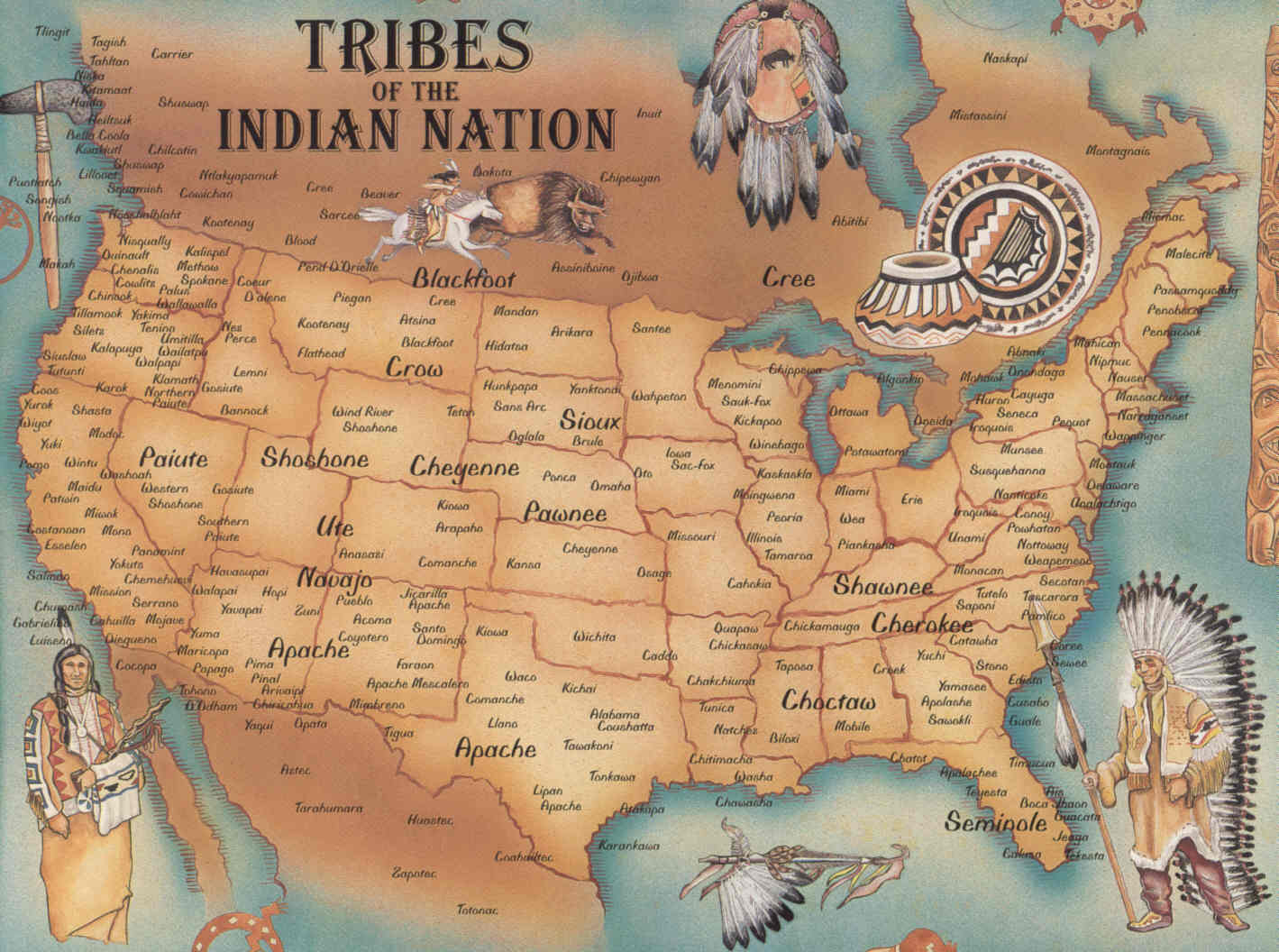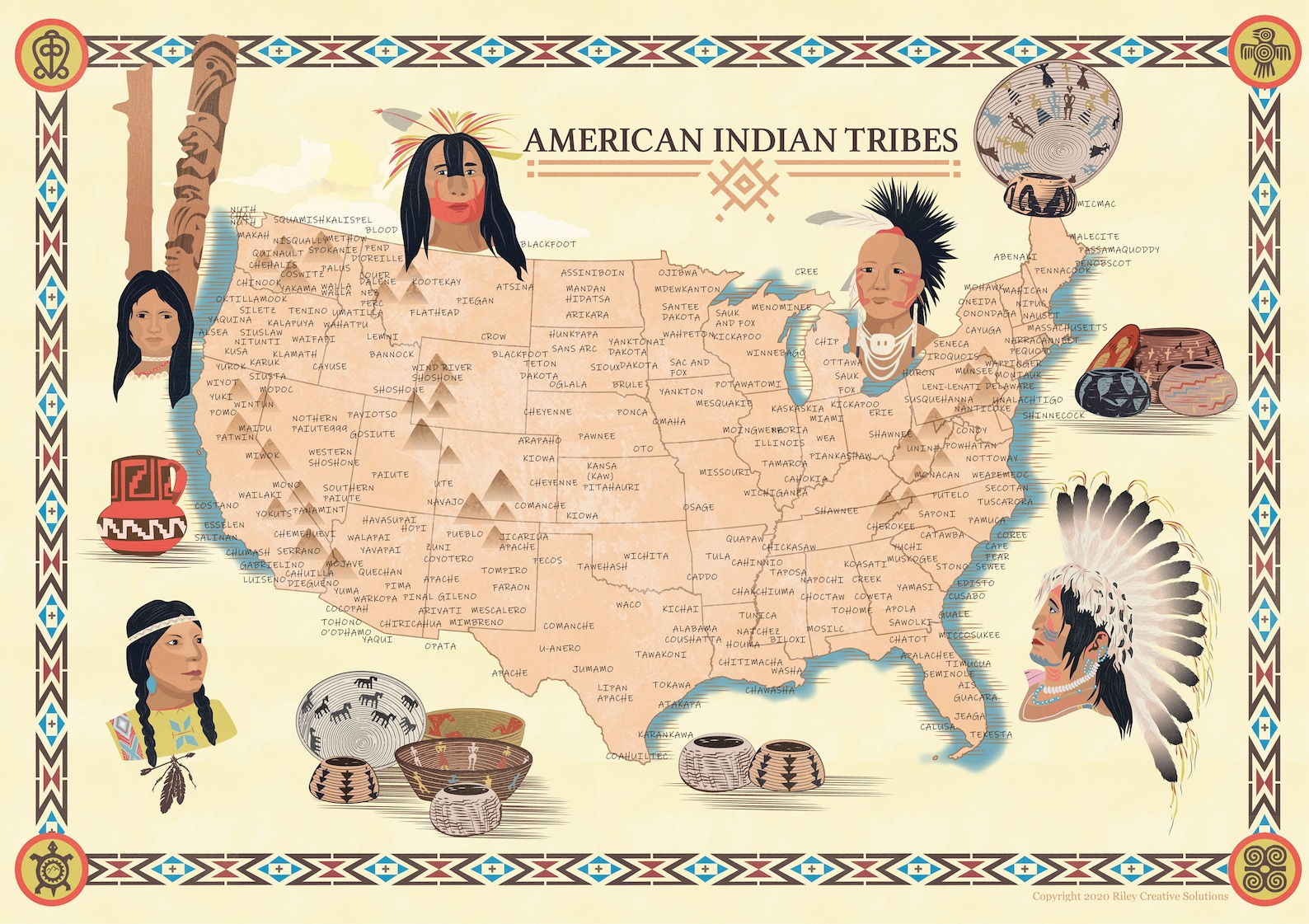Where the Spirit Roams: A Guide to Native American Tribes Across the US
Where the Spirit Roams: A Guide to Native American Tribes Across the US

The United States is a tapestry woven with the threads of diverse cultures, and Native American tribes are some of its most vibrant and enduring threads. From the windswept plains of the Great Plains to the lush forests of the Pacific Northwest, these tribes have inhabited this land for millennia, leaving an indelible mark on its landscape and its history.
But the story of Native Americans in the US isn’t just about the past. It’s about the present, too. It’s about vibrant communities, rich traditions, and a powerful spirit that continues to thrive in the face of adversity.
Related Articles: Where the Spirit Roams: A Guide to Native American Tribes Across the US
- California’s Hidden Treasures: A Guide To Its Native American Reservations
- The Navajo Nation: A Land Of Resilience And Wonder
- Unveiling the Native American Tribe of Lubbock, TX: Discoveries and Insights Await
- Caddo Cuisine: More Than Just Cornbread
- Unveiling Native American Heritage: Discover the Enchanting World of Reservations Near You
Unveiling the Tapestry: A Geographic Overview
To understand the tapestry of Native American tribes in the US, we need to look at the map. Let’s embark on a journey across the country, exploring the rich diversity of tribes in each region:
The Northeast: Where History Echoes
The Northeast, with its rolling hills, dense forests, and historic cities, was once home to a vibrant array of tribes. The Iroquois Confederacy, a powerful alliance of six nations (Mohawk, Oneida, Onondaga, Cayuga, Seneca, and Tuscarora), dominated the region for centuries. Their political system, based on consensus and diplomacy, was a remarkable achievement for its time.
Other prominent tribes in the Northeast include the Algonquin, known for their diverse languages and cultural practices, and the Lenape (Delaware), who played a significant role in the early history of Pennsylvania and New Jersey.
The Southeast: A Land of Ancient Mounds
The Southeast, with its warm climate and fertile soil, was a cradle of civilization. The Mississippian culture, a complex society that flourished between 800 and 1600 AD, left behind massive earthen mounds, testament to their advanced agricultural and social organization.
The Cherokee tribe, known for their rich oral traditions and their resilience in the face of forced relocation, is one of the most prominent tribes in the Southeast. The Choctaw, Chickasaw, and Creek tribes also played a vital role in shaping the region’s history and culture.

The Midwest: Where the Great Lakes Reflect the Sky
The Midwest, with its vast prairies, fertile farmlands, and the majestic Great Lakes, was home to numerous tribes who adapted to the region’s unique environment. The Anishinaabe, a group of related tribes including the Ojibwe, Odawa, and Potawatomi, are known for their deep connection to the natural world and their vibrant storytelling traditions.
The Sioux (Lakota, Dakota, and Nakota), who migrated to the region from the east, were known for their skilled horsemanship and their fierce independence. They played a pivotal role in the history of the Great Plains, where their nomadic lifestyle and spiritual connection to the land left an enduring legacy.
The Southwest: Where the Sun Dances
The Southwest, with its arid landscapes, towering mesas, and ancient ruins, is a land of mystery and wonder. The Pueblo tribes, known for their adobe villages and their intricate pottery, have lived in this region for centuries, adapting to the harsh environment and developing a unique culture that blends ancestral traditions with modern innovations.

The Navajo and Apache, who migrated to the Southwest from the north, are known for their intricate weaving, their powerful storytelling traditions, and their enduring spirit. The Hopi, known for their unique religious beliefs and their stunning kachina dolls, have maintained their cultural identity for centuries, despite facing challenges from colonization and assimilation.
The West: Where the Mountains Meet the Sea
The West, with its rugged mountains, vast forests, and stunning coastline, was home to a diverse array of tribes who adapted to the region’s varied landscapes. The Chinook, who lived along the Columbia River, were known for their sophisticated trade networks and their mastery of canoe building.
The Salish, who inhabited the interior of the Pacific Northwest, are known for their intricate carvings and their rich oral traditions. The Yurok and Hupa, who lived along the California coast, were known for their fishing skills and their complex social structures.
The Alaska Native Tribes: Guardians of the Arctic

Alaska, with its breathtaking landscapes and vast wilderness, is home to a unique collection of Native American tribes, known collectively as Alaska Natives. The Inuit, who inhabit the Arctic region, are known for their remarkable adaptation to the harsh environment and their intricate knowledge of the natural world.
The Yupik and Unangan tribes, who live along the Bering Sea coast, are known for their traditional hunting and fishing practices and their vibrant cultural traditions. The Tlingit, Haida, and Tsimshian, who inhabit the southeastern panhandle of Alaska, are known for their intricate totem poles, their skilled woodworking, and their rich cultural heritage.
Beyond the Map: The Ongoing Struggle
The story of Native American tribes in the US is not just about geography; it’s about resilience, adaptation, and the fight for self-determination. Despite facing centuries of colonization, displacement, and assimilation, Native American tribes have continued to fight for their rights, their culture, and their future.
The Indian Removal Act of 1830 forced thousands of Native Americans to relocate from their ancestral lands, leading to the infamous Trail of Tears and the decimation of many tribes. The Boarding School Era saw Native American children forcibly removed from their families and subjected to assimilation policies designed to erase their cultural identities.
Despite these challenges, Native American tribes have found ways to persevere. They have created their own institutions, preserved their languages and traditions, and fought for recognition and respect. The Indian Self-Determination and Education Assistance Act of 1975 gave Native American tribes greater control over their own affairs, paving the way for self-governance and economic development.
The Future is Now: A Call to Action
The future of Native American tribes in the US depends on the choices we make today. We need to support their efforts to preserve their cultures, protect their lands, and achieve economic self-sufficiency. We need to learn from their wisdom, honor their resilience, and stand in solidarity with their fight for justice.
FAQ: A Deeper Dive
Q: What are some of the most important issues facing Native American tribes today?
A: Native American tribes continue to face a wide range of challenges, including:
- Economic disparity: Native American communities have significantly lower income levels and higher rates of poverty compared to the general population.
- Health disparities: Native Americans experience higher rates of chronic diseases, infant mortality, and suicide.
- Environmental justice: Many Native American communities are located in areas with high levels of environmental pollution, impacting their health and well-being.
- Lack of access to clean water: Many Native American communities lack access to safe and reliable drinking water, contributing to health problems.
- Violence against Native women: Native American women face disproportionately high rates of violence, including sexual assault and murder.
Q: How can I support Native American tribes?
A: There are many ways to support Native American tribes, including:
- Educate yourself: Learn about the history, culture, and current issues facing Native American tribes.
- Support Native-owned businesses: Shop at Native-owned businesses and support their economic development.
- Donate to Native organizations: Support organizations working to address the needs of Native American communities.
- Advocate for Native rights: Support legislation and policies that protect the rights of Native American tribes.
- Respect Native culture: Learn about Native American traditions and customs and treat them with respect.
Q: How can I learn more about specific Native American tribes?
A: There are numerous resources available to learn more about specific Native American tribes, including:
- Tribal websites: Many tribes have their own websites that provide information about their history, culture, and current activities.
- Museums and cultural centers: Museums and cultural centers dedicated to Native American history and culture can provide valuable insights.
- Books and documentaries: There are many books and documentaries that explore the history and culture of Native American tribes.
- Tribal organizations: National and regional tribal organizations can provide information about specific tribes and their issues.
Q: What are some of the best ways to celebrate Native American culture?
A: There are many ways to celebrate Native American culture, including:
- Attend powwows: Powwows are traditional gatherings that feature dancing, singing, drumming, and storytelling.
- Visit Native American art galleries: Support Native artists by visiting their galleries and purchasing their work.
- Learn about Native American languages: There are many resources available to learn about and even speak Native American languages.
- Support Native American music: Listen to and support Native American musicians and their music.
The Journey Continues
The story of Native American tribes in the US is a journey of resilience, adaptation, and cultural survival. It’s a journey that continues today, as tribes fight for their rights, their traditions, and their future. By learning about their history, understanding their struggles, and supporting their efforts, we can all play a role in ensuring that the spirit of Native America continues to thrive.

Closure
Thus, we hope this article has provided valuable insights into Where the Spirit Roams: A Guide to Native American Tribes Across the US. We appreciate your attention to our article. See you in our next article!

